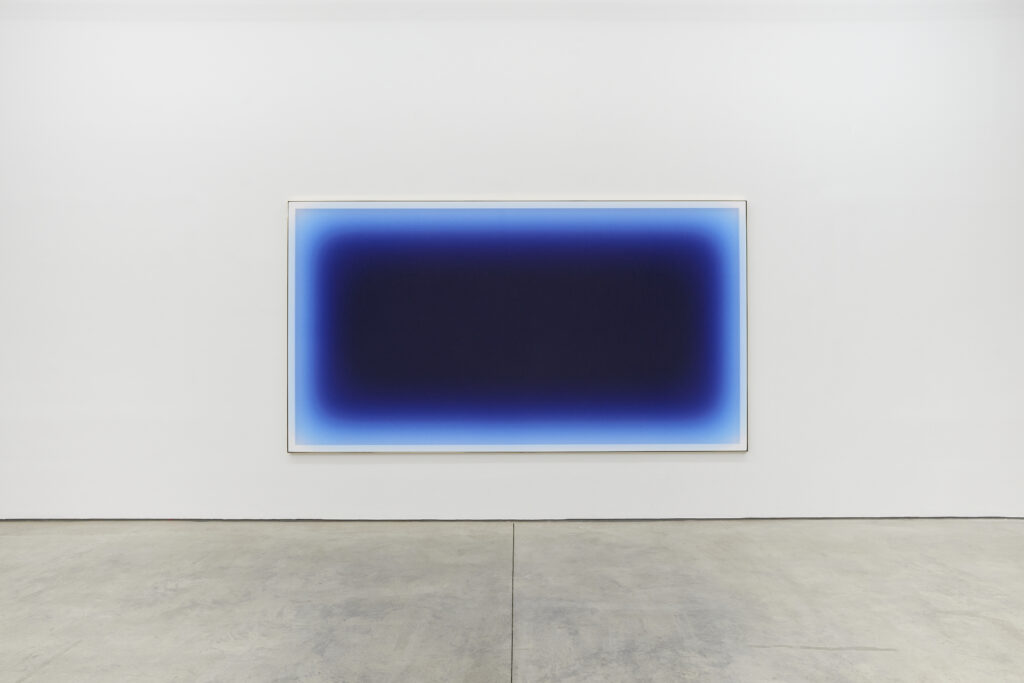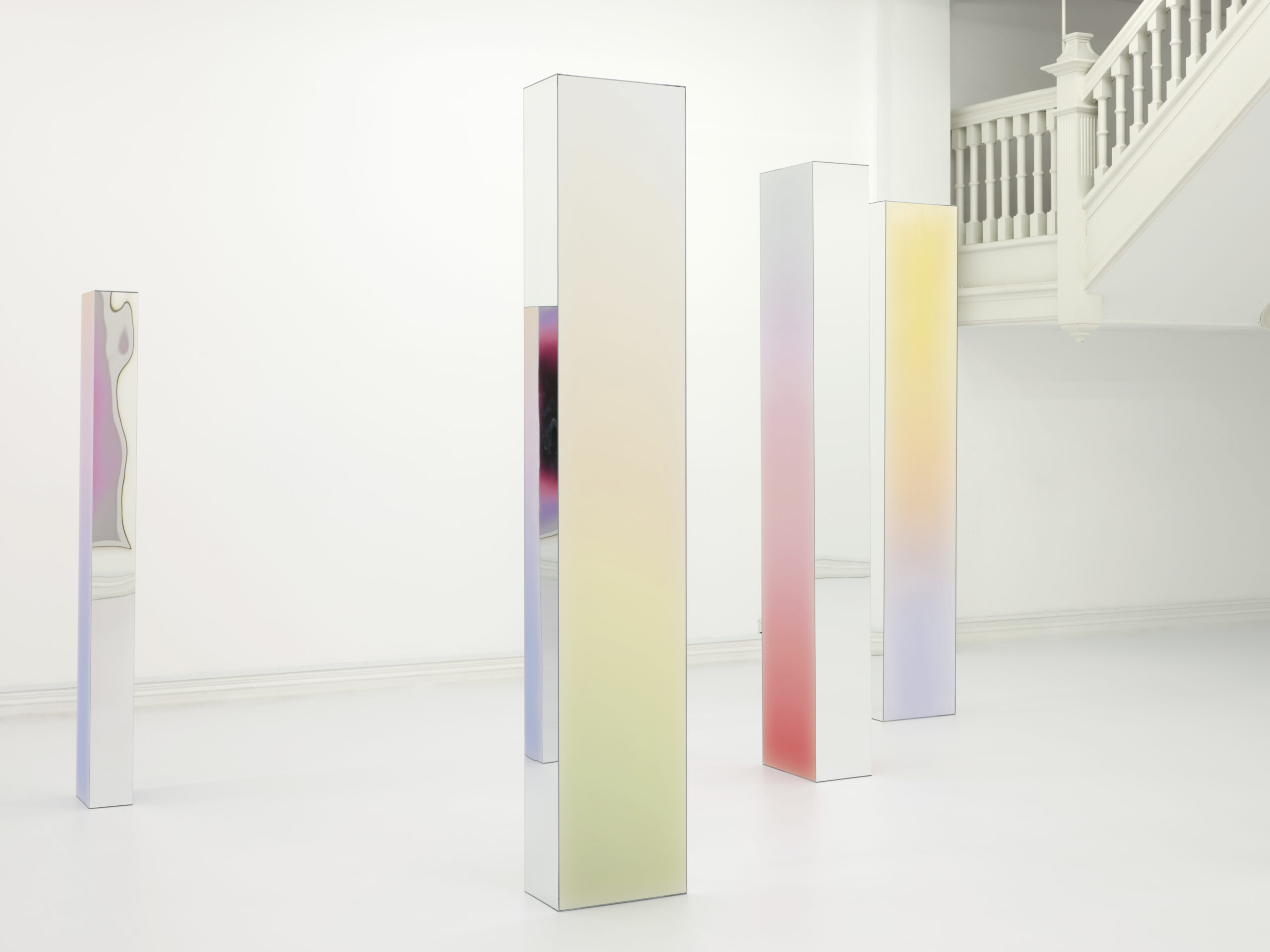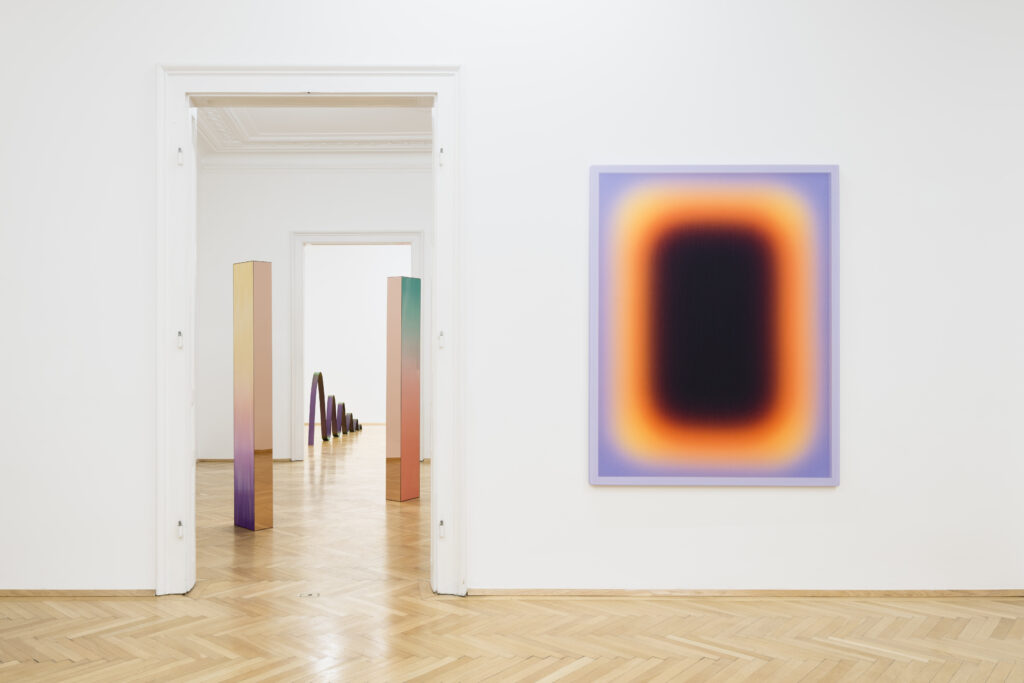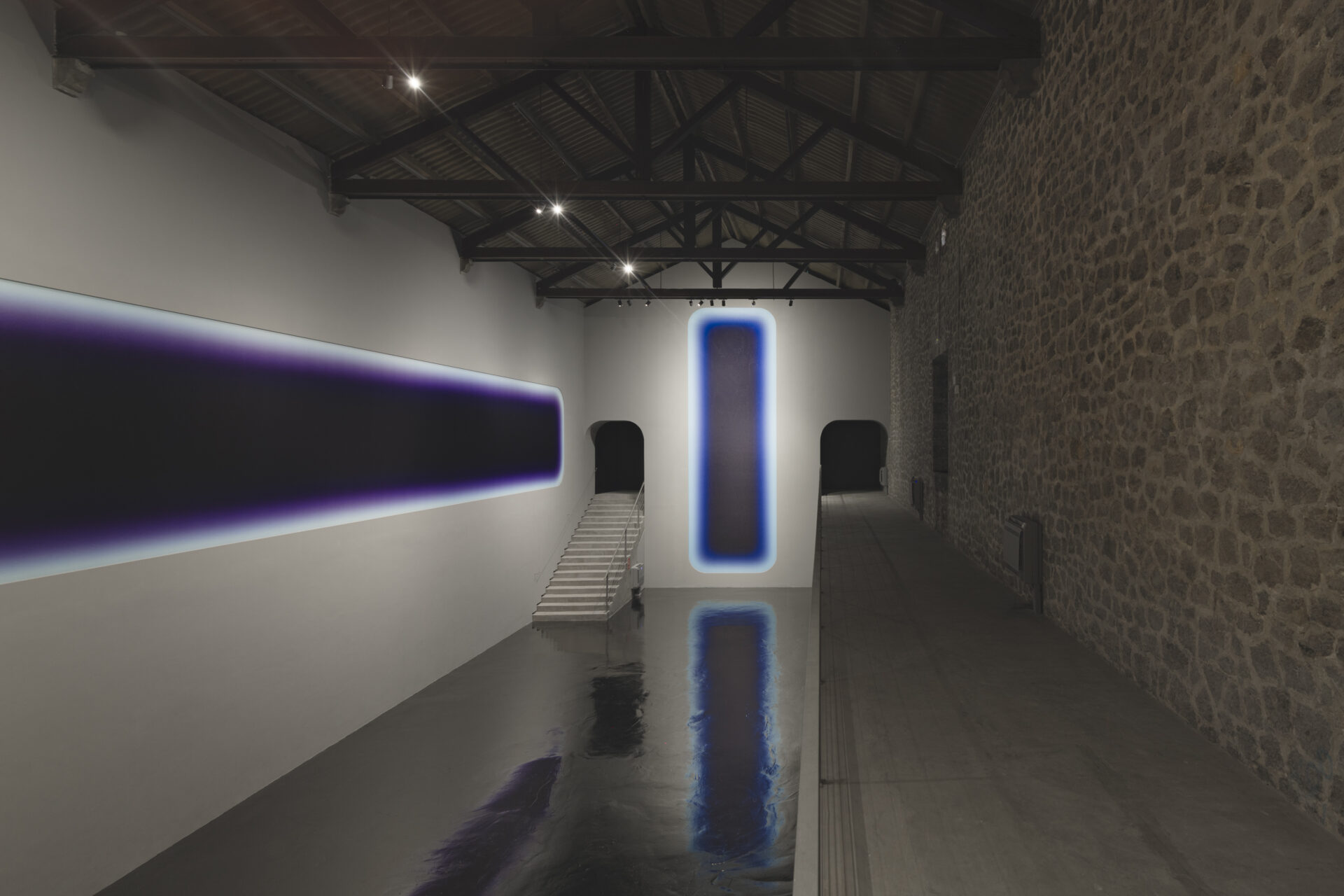Jonny Niesche
Jonny Niesche explores abstraction in a way perhaps best described as a meeting of East and West coast, where sleek minimalism is fused with the ethereal and atmospheric. His works are at once refined and machine-like, whilst enveloping the viewer in total sensory stimulation via the aid of vivid colours and illusion — formal and deceptive. Working primarily across painting and sculpture, both bodies of work are highly seductive, as their iridescent surfaces hum and shimmer with pigment. Here colour floats above the surface, yet is grounded by the hard-edges of mirrored materials framing each colour field. Whether referencing the makeup tones of Debbie Harry or David Bowie, the palate of Bottega Veneta’s summer collection, the forms of structures and transportation from early sci-fi films, or directly referencing the artistic canon that came before him, his concepts are as layered as his works’ colour spectrum. Niesche engages with these conceptual underpinnings in aesthetic collaboration with colour, form and light, producing culturally rich, formally and optically charged works that challenge our perception of space.
Niesche lives and works in Sydney; his work has been exhibited extensively at galleries throughout Australia and further afield, including: Art Gallery of South Australia, Adelaide (2023); Queensland Art Gallery, Brisbane (2023); Fundación La Nave Salinas, Ibiza (2023), WestLotto, Münster (2022); 1301PE, Los Angeles (2021); The Hole, New York (2021); Galerie Ron Mandos, Amsterdam (2021); Starkwhite, Auckland (2020); Station Gallery, Melbourne (2020), Zeller van Almsick, Vienna (2020); Sarah Cottier Gallery, Sydney (2019); LUNDGREN Gallery, Palme De Mallorca (2019) and Peter Von Kant, London (2017). His work has also been included in notable exhibition in a number of Australian institutions, including: Museum of Contemporary Art, Sydney (2019); Casula Powerhouse, Sydney (2019); Art Gallery of South Australia, Adelaide (2019); ArtSpace, Sydney (2017); National Gallery of Victoria, Melbourne (2016) and Australian Centre for Contemporary Art, Melbourne (2016).






























